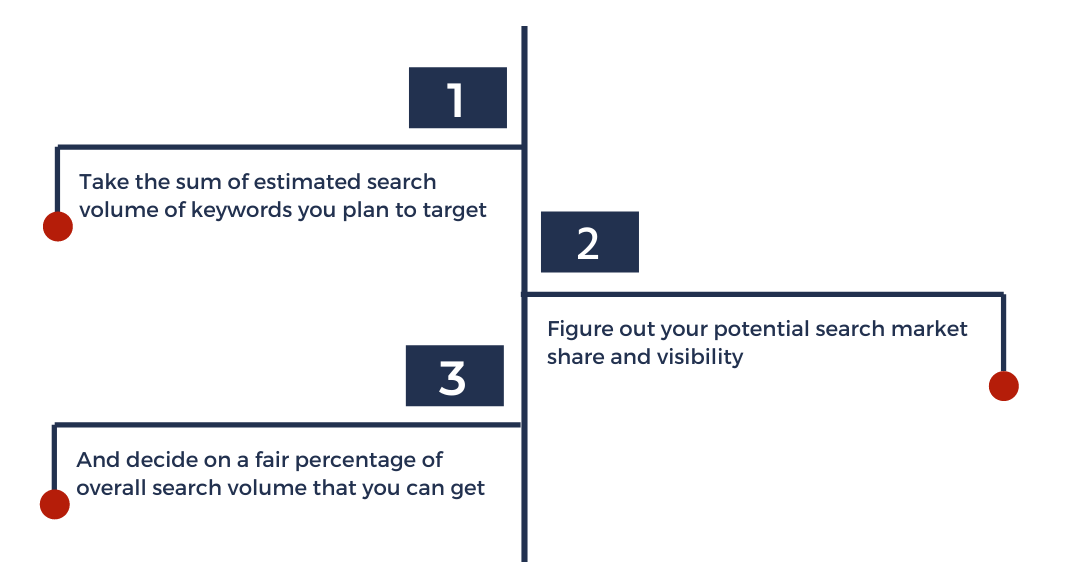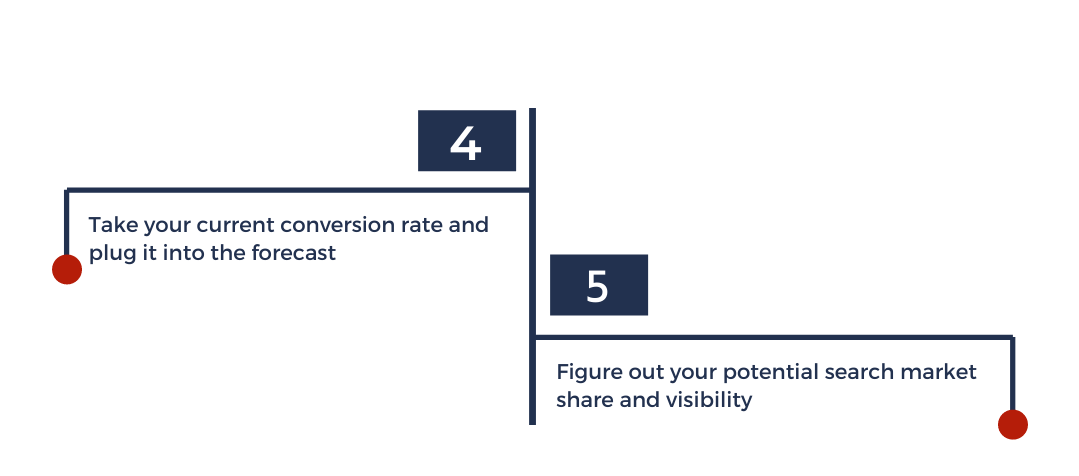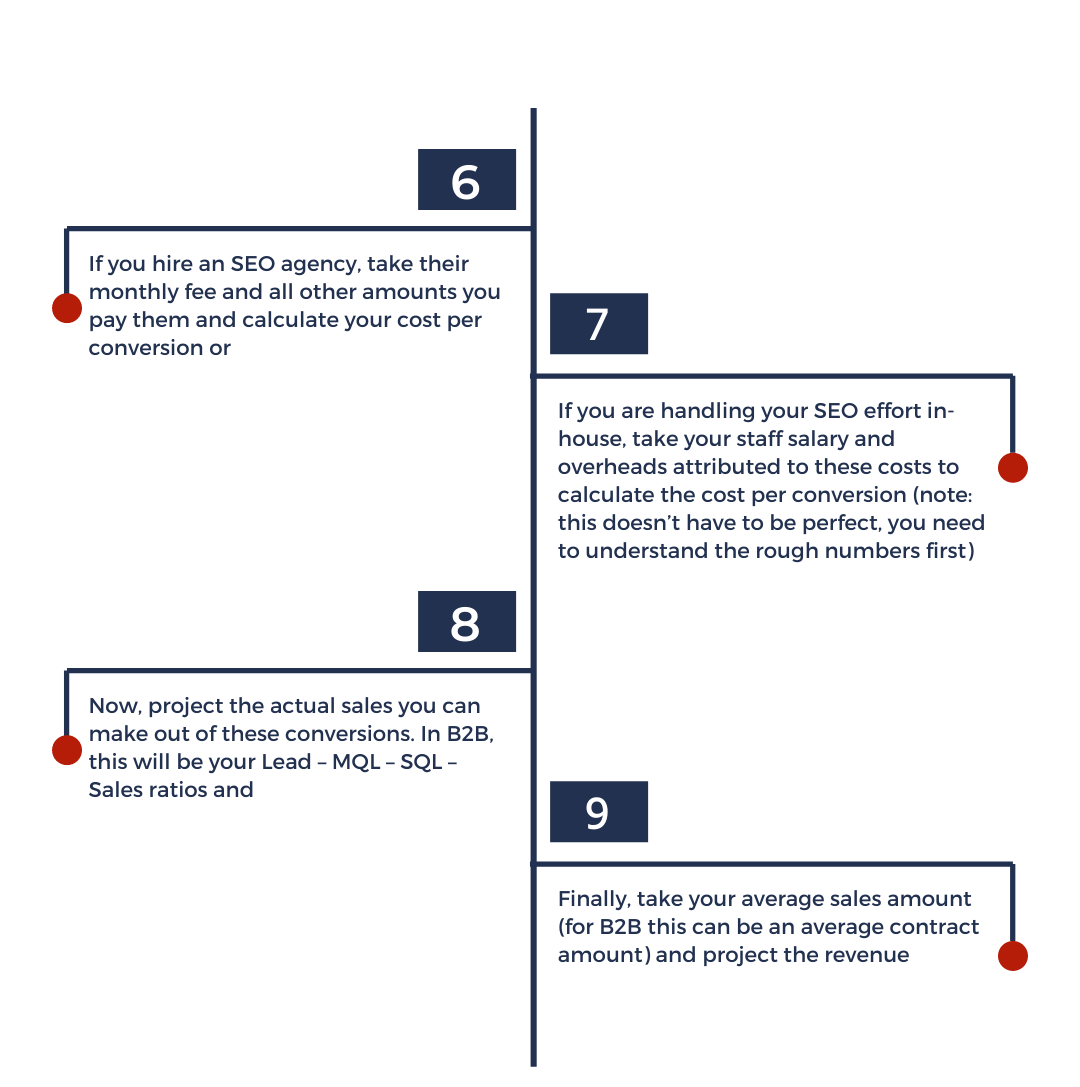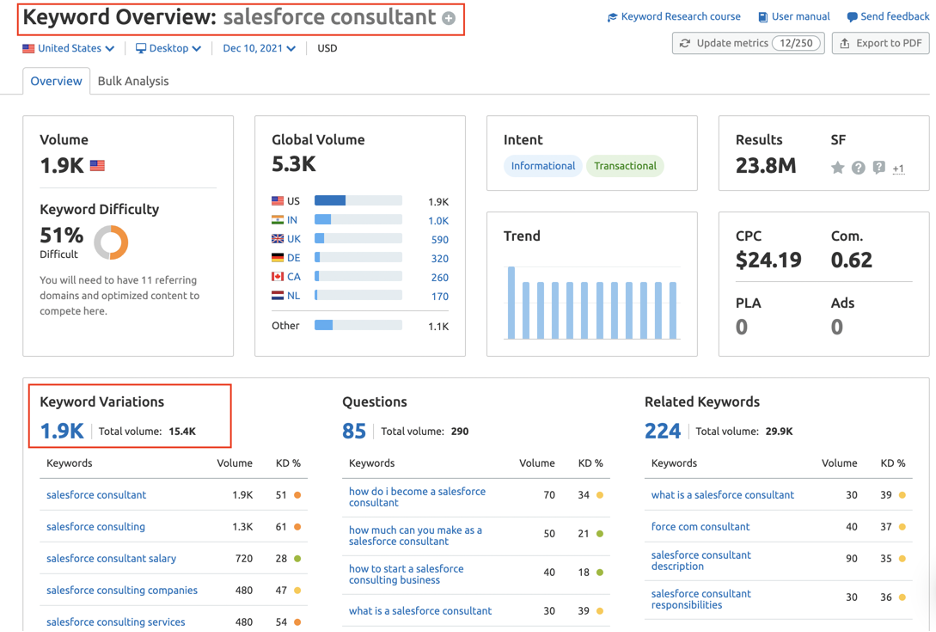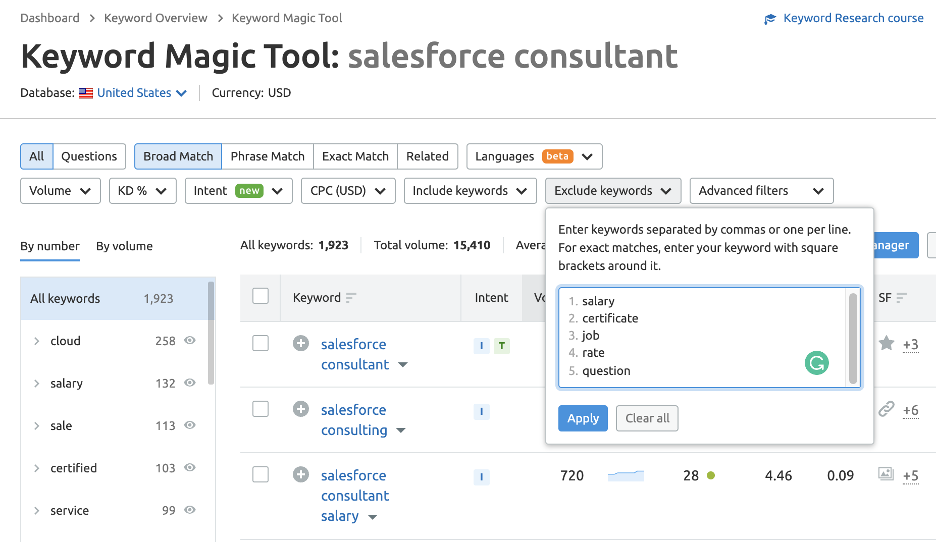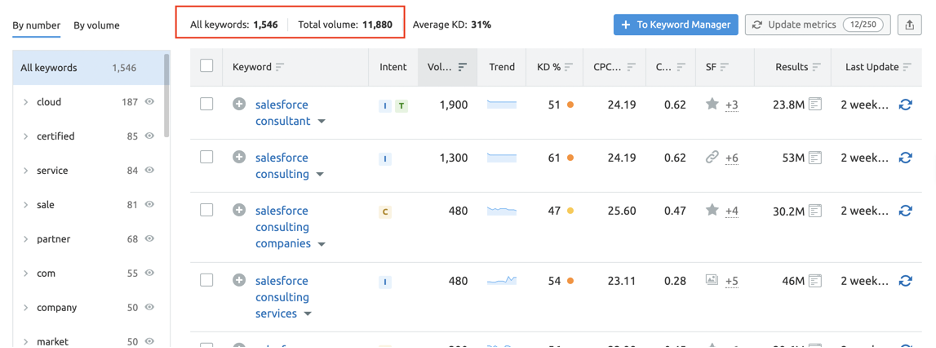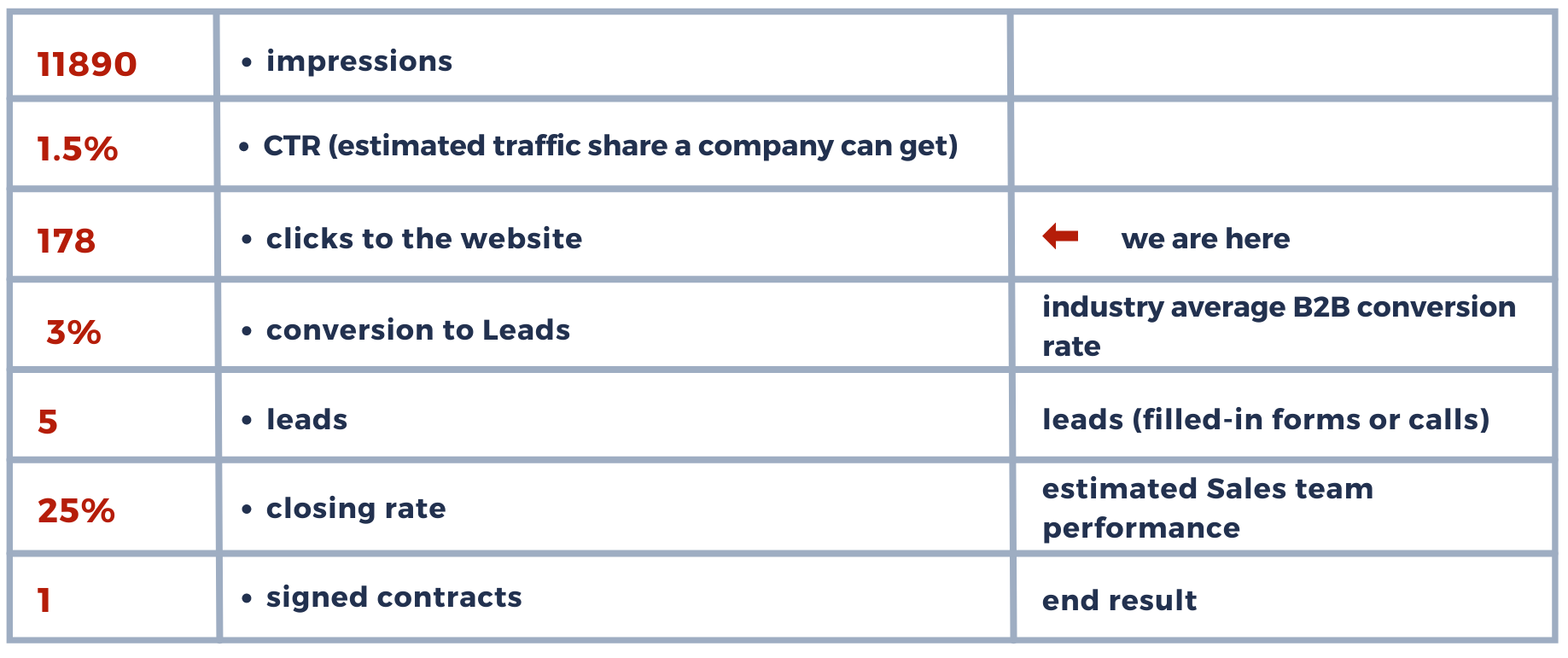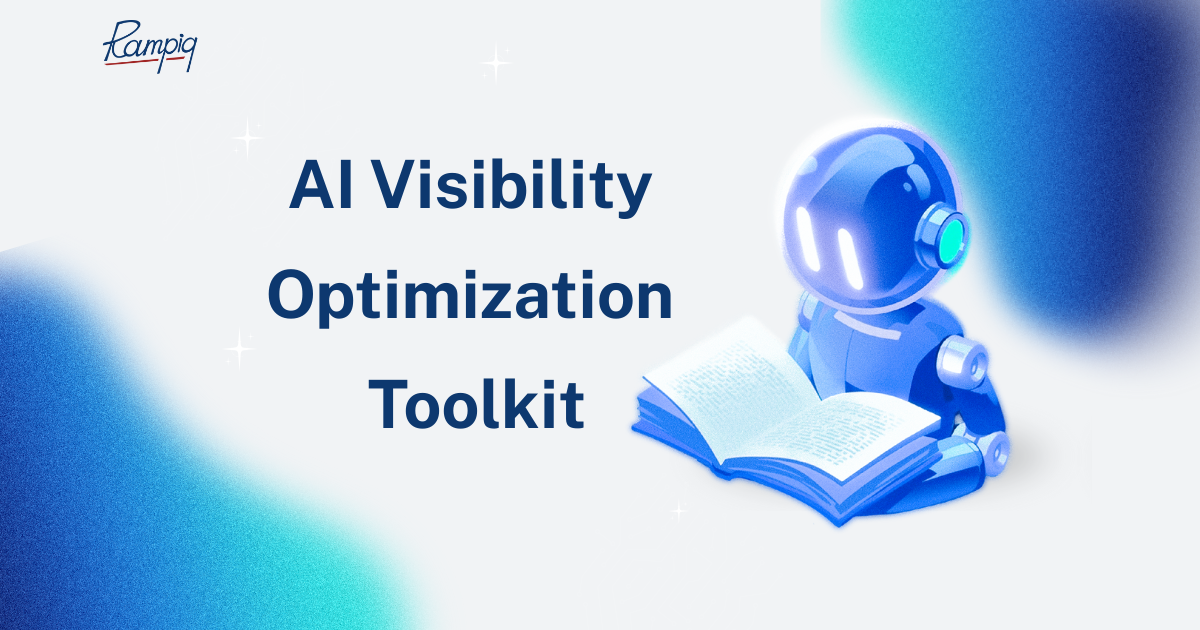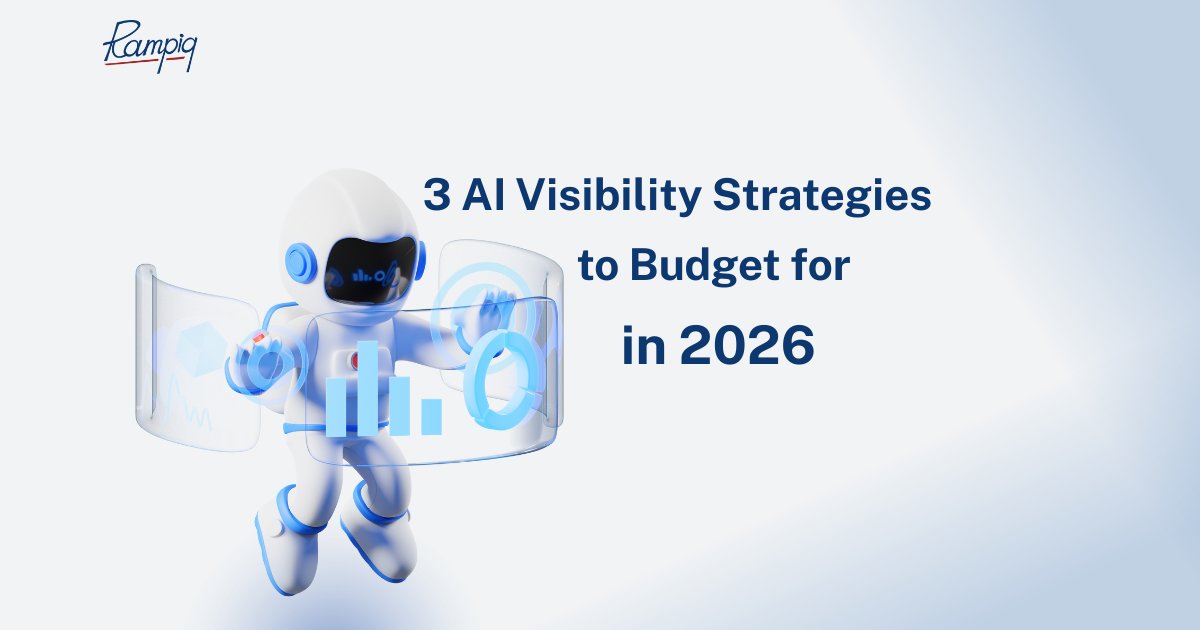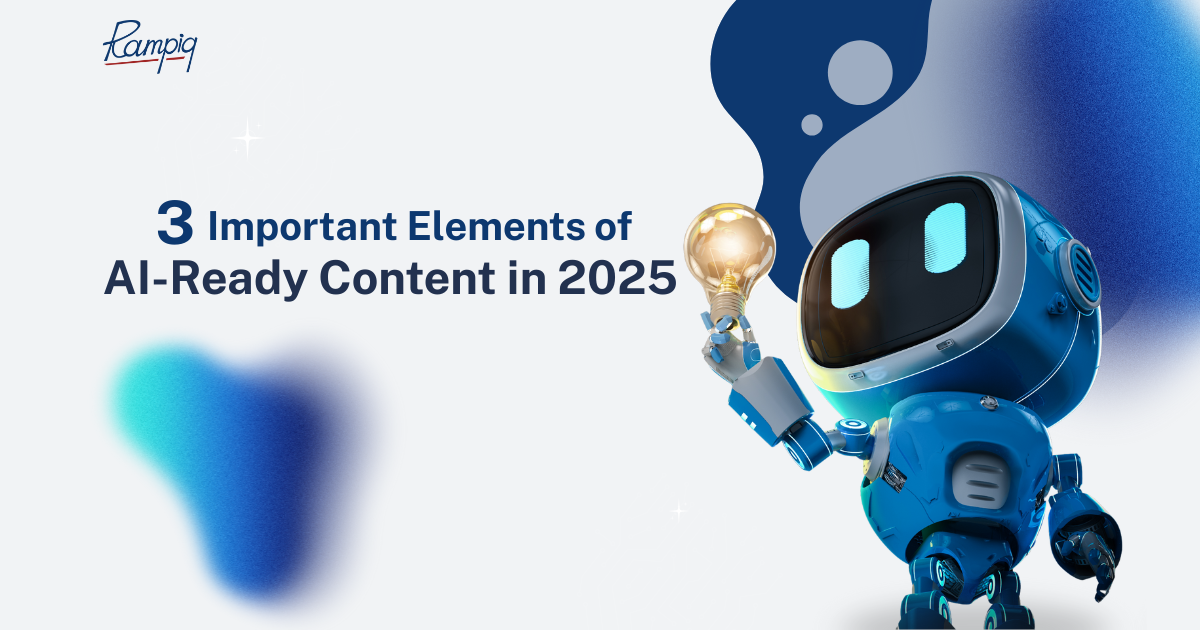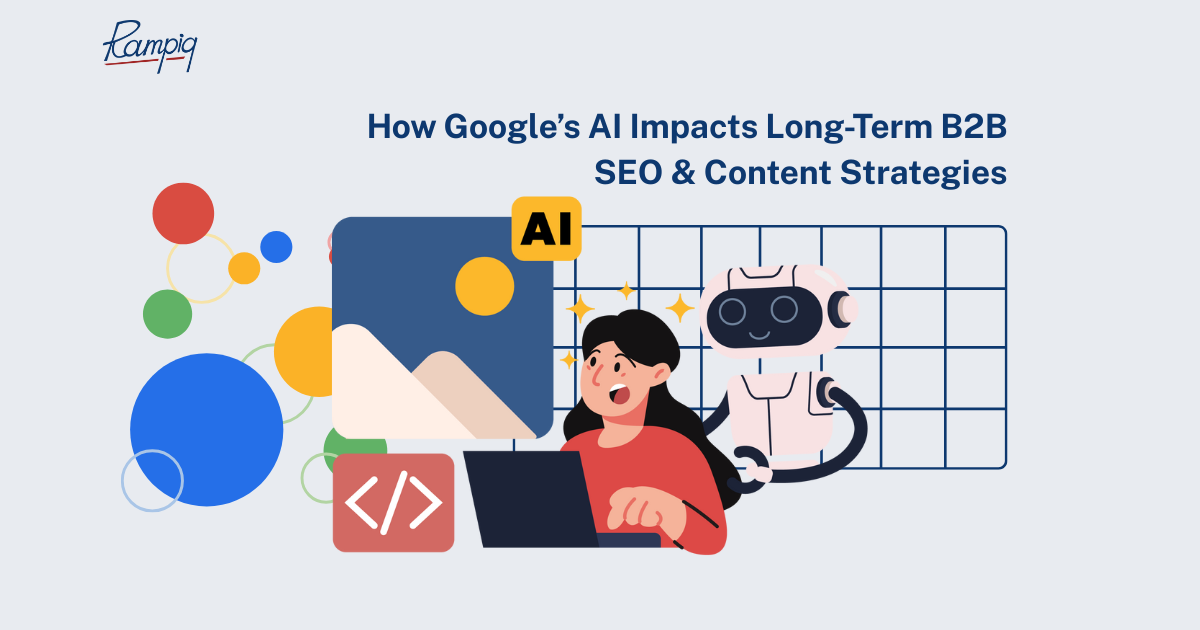SEO sales forecasting is the process of predicting the potential traffic and conversions that a business can generate through its SEO strategy, in order to estimate the revenue that can be generated from search engine traffic. This process enables businesses to understand the potential outcomes of their SEO efforts, make informed decisions on budgeting, and prioritize efforts to achieve their revenue goals.
To forecast SEO sales, you need to analyze factors like search volumes, historical data, your competition, and keyword trends using tools, such as Google Analytics, keyword research tools, and historical data. With SEO sales forecasting, organizations can estimate the potential traffic and conversions they can generate through a specific SEO strategy. Based on these insights, you can make data-driven decisions to optimize your SEO strategy for maximum ROI.
Organic search forecasting gives you reliable data to predict your SEO growth and estimate your ROI. This article explains the importance of SEO sales forecasting for your business. We talk about specific metrics to take into account for building a reliable SEO forecast and provide a real-world B2B SEO forecast calculation example to illustrate how we estimate SEO sales and ROI for a B2B company.

